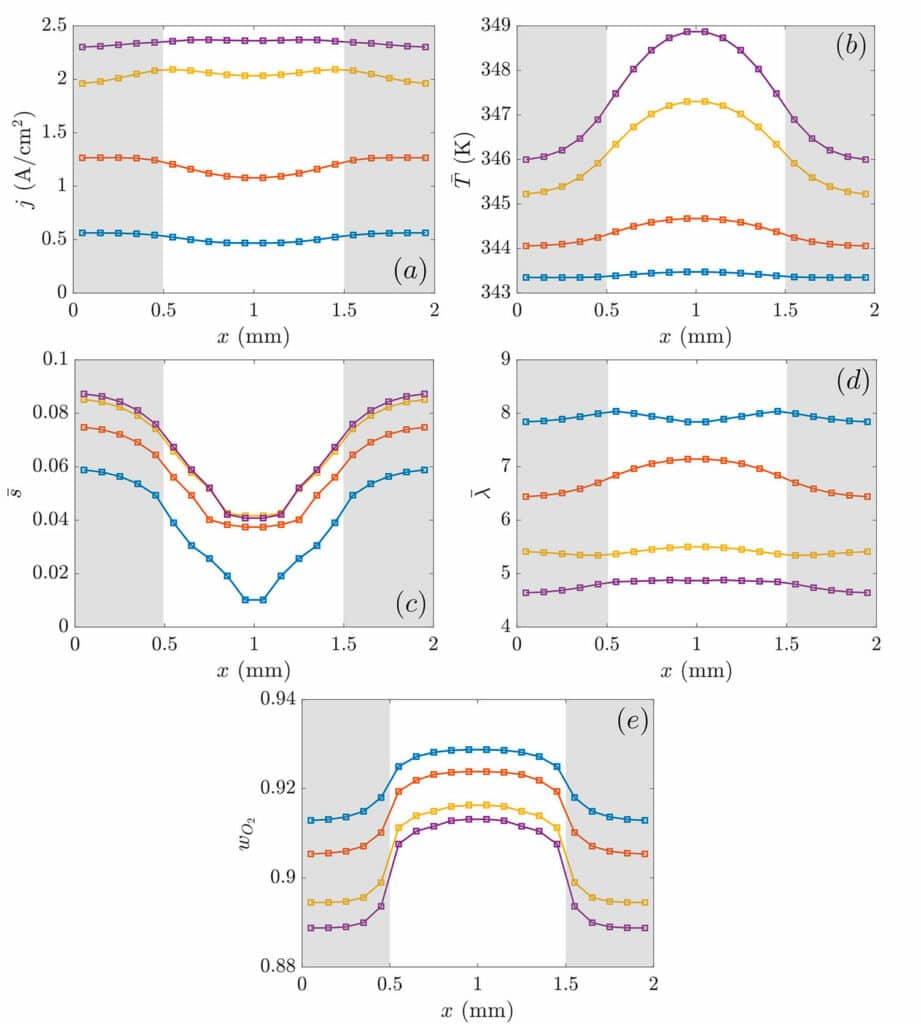Fuel cells based on proton exchange membranes (PEMs) have become one of the most promising devices in the last few years for the electrical conversion of stored hydrogen. These are one of the cleanest and most efficient energy conversion devices and are expected to play a leading role in future energy solutions.
A team of researchers from the Department of Energy Engineering at the University of Seville, together with AICIA (Association for Research and Industrial Cooperation of Andalusia), conducted three-dimensional CFD simulations to analyze the role of water on the performance of a single straight-channel Proton-Exchange Membrane Fuel Cell (PEMFC) under different operating temperatures.
The research is aimed at gaining further insights into the complex and tightly coupled interactions taking place inside the fuel cell, relating water generation and transport with local temperature distributions and cell performance.
A sensitivity analysis concluded that the higher the operating temperature is, the better the electrical performance of the PEMFC for the range of operating temperatures analyzed. This feature was further investigated at high current densities (j = 2.25 and 2.57 A/cm2), where the increase of the operating temperature resulted in enhancement of the water diffusivity and the electro-osmotic drag, improving the ionic conductivity.

Cross-sectional averages have revealed that evaporation effects are not so important as to decrease the PEMFC performance under such operating conditions, despite the decrease in the water saturation and membrane hydration levels. On the other hand, temperature profile plots in dimensionless form have exhibited some similarities which might be of interest for the characterization or design of PEMFC via analytical expressions or scaling laws.
For the oxidizer, it has been observed that the distributions of oxygen consumption look very similar between all the operating temperatures. The highest values were found under-channel and the lowest under-rib, with a clear diminution of the oxygen concentration with the load increase.
Even though an exhaustive sensitivity study was addressed, the researchers claimed that the isolation of a single variable from the rest in a PEMFC is not always possible, given the diverse nature and coupling of the processes involved.
Journal reference:
- Antonio Martín-Alcántara, Javier Pino, Alfredo Iranzo. New insights into the temperature-water transport-performance relationship in PEM fuel cells. International Journal of Hydrogen Energy, 2023; DOI: 10.1016/j.ijhydene.2022.12.281
